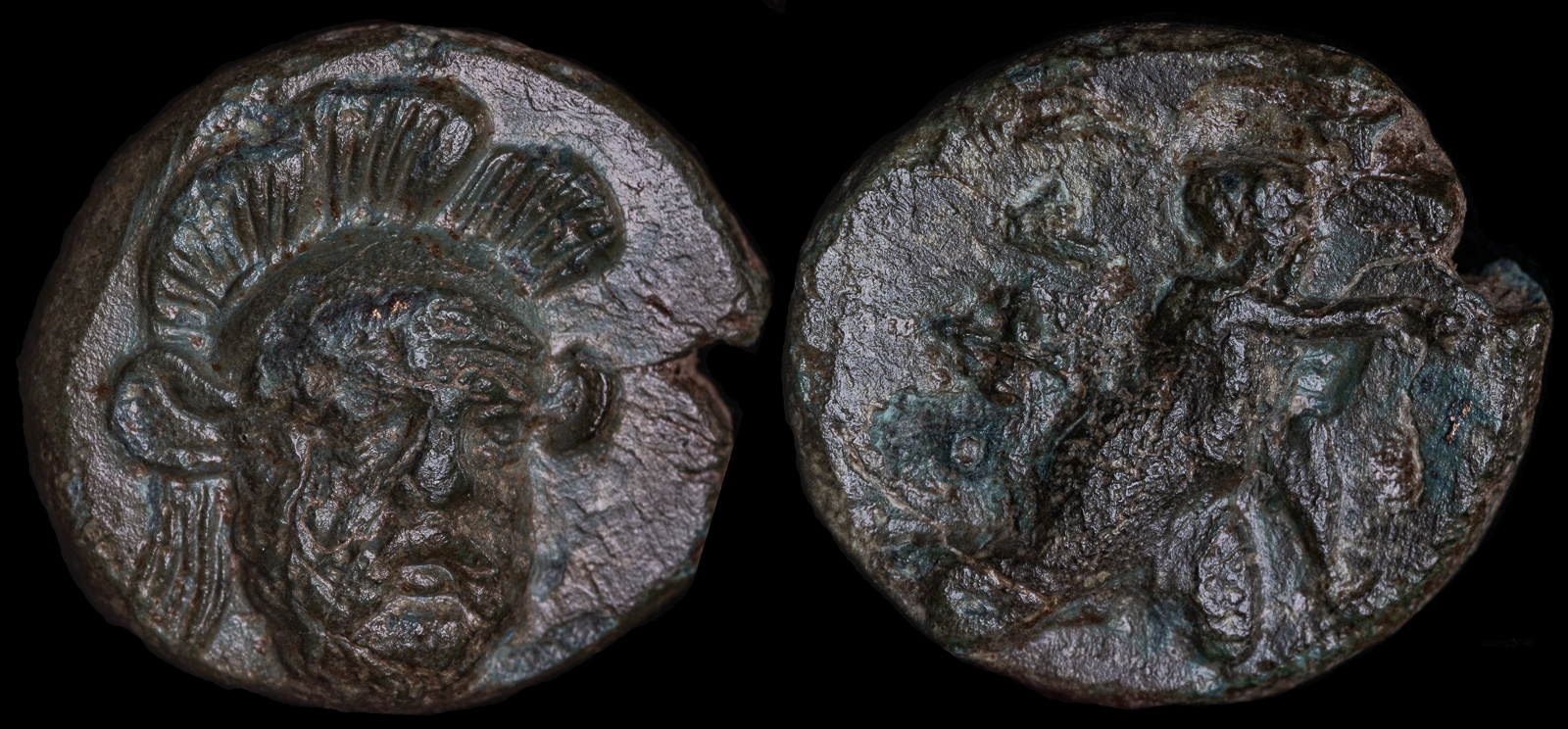
circa 350-300 BCE
Æ 12 mm, 1,73 g
Bearded head of Hector of Troy facing, turned slightly to the right, wearing triple crested helmet /
ΟΦΡΥ, the infant Dionysos kneeling right atop ivy branch, holding grape cluster in right hand.
SNG Copenhagen 456; SNG von Aulock 1559.
Ophrynion, at the time this coin was minted, supposedly contained the tomb and bones of Hector, who famously died in the siege of Troy at the hands of Achilles, as detailed in Homer’s Iliad. For that reason, Hector is depicted on the obverse of this coin. While later coins would also feature Homer, this is the earliest depiction of him on a coin.
After Thebes was re-founded by Kassander after it was destroyed by Alexander the Great, an oracle stated that the city would be prosperous only if Hector’s bones were transported there, so they were. Nevertheless, Strabo mentions that Hector was still worshipped in Ophrynion in the 1st century BCE, so the absence of his bones obviously didn’t deter them.
The city is mentioned in Xenophon’s Anabasis as a location visited by the 10,000, where they sacrificed and received good omens. Later, Demosthenes of Athens told a story about Parmeno, who lived in Ophrynion during his exile until an earthquake unfortunately killed his wife and children.
Legend states that the city was founded in the aftermath of the Trojan War, but recent archeology places its founding much later, around the 6th century BCE, though perhaps the city could have been moved there.